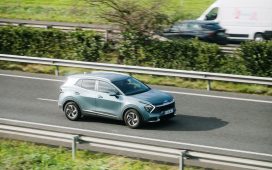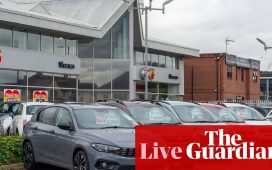Metro’s Blue, Orange and Silver lines experienced repeated delays, while the crush of crowds forced the rail system to close entrances to the Smithsonian station and make it exit-only for hours while transit officials urged riders to walk to nearby stations.
Cherry blossom sightseers were joined by attendees of the Blossom Kite Festival, which took place on the same day.
Passenger counts meant long waits for some riders, but they were an encouraging development for a rail system that has lost about half its ridership since the pandemic began.
Metro General Manager Randy Clarke has said in recent months that Metro needed to be ready for an early cherry blossom season, successfully persuading its regulator to permit the use of additional 7000-series rail cars. The cars are being phased into service after a lengthy suspension for a wheel stability issue that was discovered after a derailment in October 2021.
Clarke on Sunday said in a tweet that Metro was running “lots” of extra trains, while Metro workers had been deployed to downtown and Southwest Washington stations to help facilitate long lines that formed to enter stations and board trains.
Crazy crowds at Metro Center and Smithsonian, but Metro staff were doing a great job managing.
Love to see full trains. More people means more service!
— Nathan Lee Pavalko (@nlpavalko1) March 26, 2023
Metro has been increasing train frequencies as it puts more rail cars into service. Frequencies across the rail system Sunday were eight minutes on the Red and Green lines, while other lines had trains every 12 to 15 minutes. Between Stadium-Armory in Southeast Washington and Rosslyn in Arlington, trains arrived about every four minutes because the stations service multiple lines, Ly said.
Metro added more trains Sunday when transit officials noticed the lines swelling throughout the day.
Even so, images on social media showed station platforms thick with people.
“Simply put, we are packed today,” Clarke tweeted.
Meanwhile, @wmata absolutely crushed it today. Trains every 1-2 minutes, tons of staff at every station directing folks and helping them get use the farecards machines etc. A *noticeable* effort that kept a huge number of people moving smoothly.🌸🌸🌸 https://t.co/nOQkIImZbN
— Alex Dodds (@alexgdodds) March 27, 2023
We had a great experience today! Took 4 trains to get from Silver Spring to the kite festival/cherry blossoms and back, and our longest wait was 8 minutes. It was crowded and there were some bottlenecks but Metro workers were on top of it.
— i only tweet about the mountain goats (@dingle_kerry) March 27, 2023
For those who decided to drive, interstate tunnels and bridges were bumper-to-bumper while Hains Point and other Tidal Basin access points were transformed into virtual parking lots for hours.
U.S. Park Police had warned drivers Saturday morning that high traffic volumes were expected around the Tidal Basin and that parking would fill quickly.
In preparation for large crowds, the National Park Service announced last week that Ohio Drive through East Potomac Park around Hains Point would be routed in reverse flow to keep traffic moving in a continuous direction. But the number of cars was too intense, the Park Service said, leaving motorists stuck, in some cases, for hours.
“Ultimately, as elsewhere in the city, we were simply overwhelmed by far more vehicles than we had the capacity to accommodate on our roads and in our parking lots,” National Mall and Memorial Parks spokesman Mike Litterst wrote in an email.









